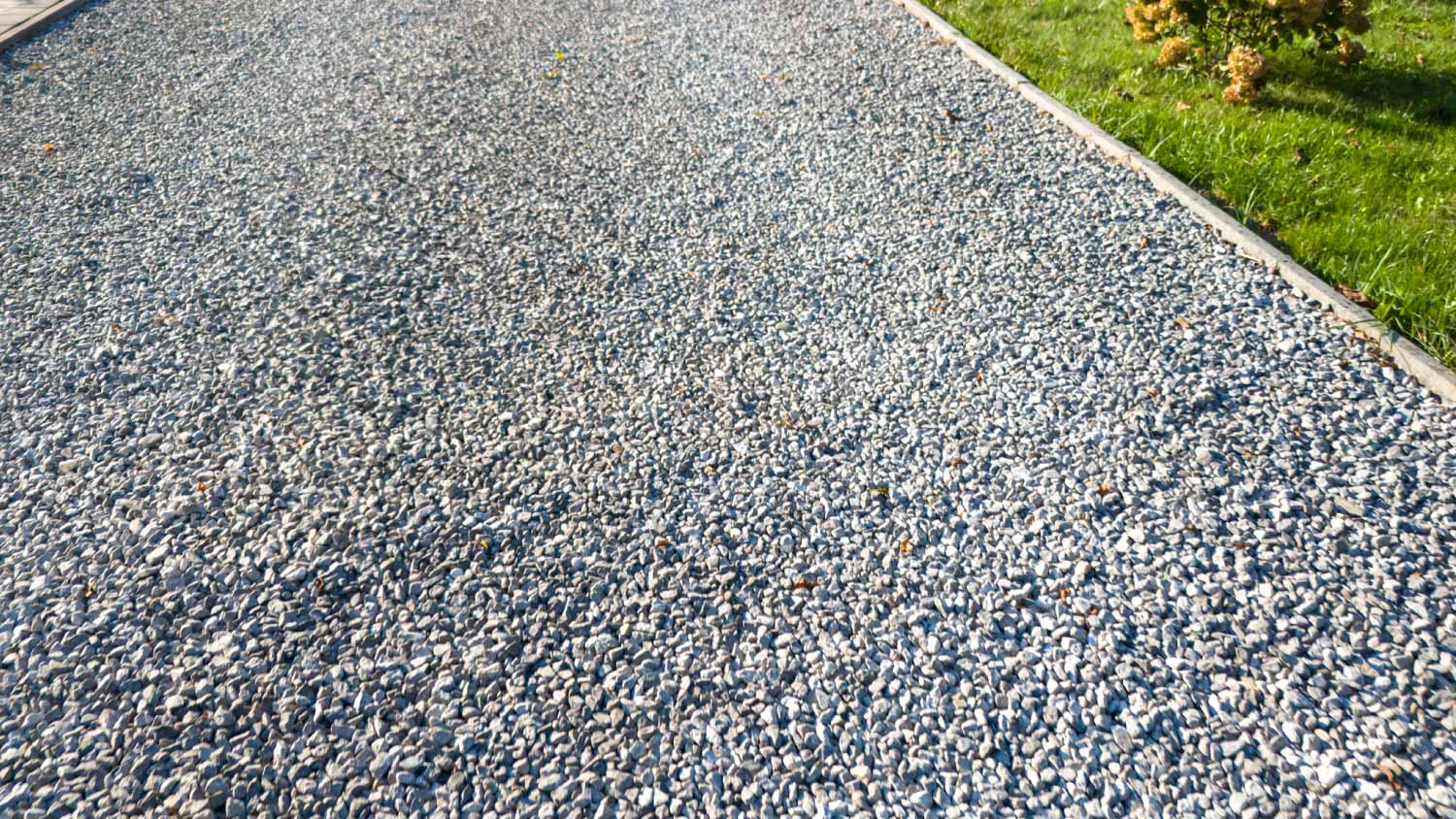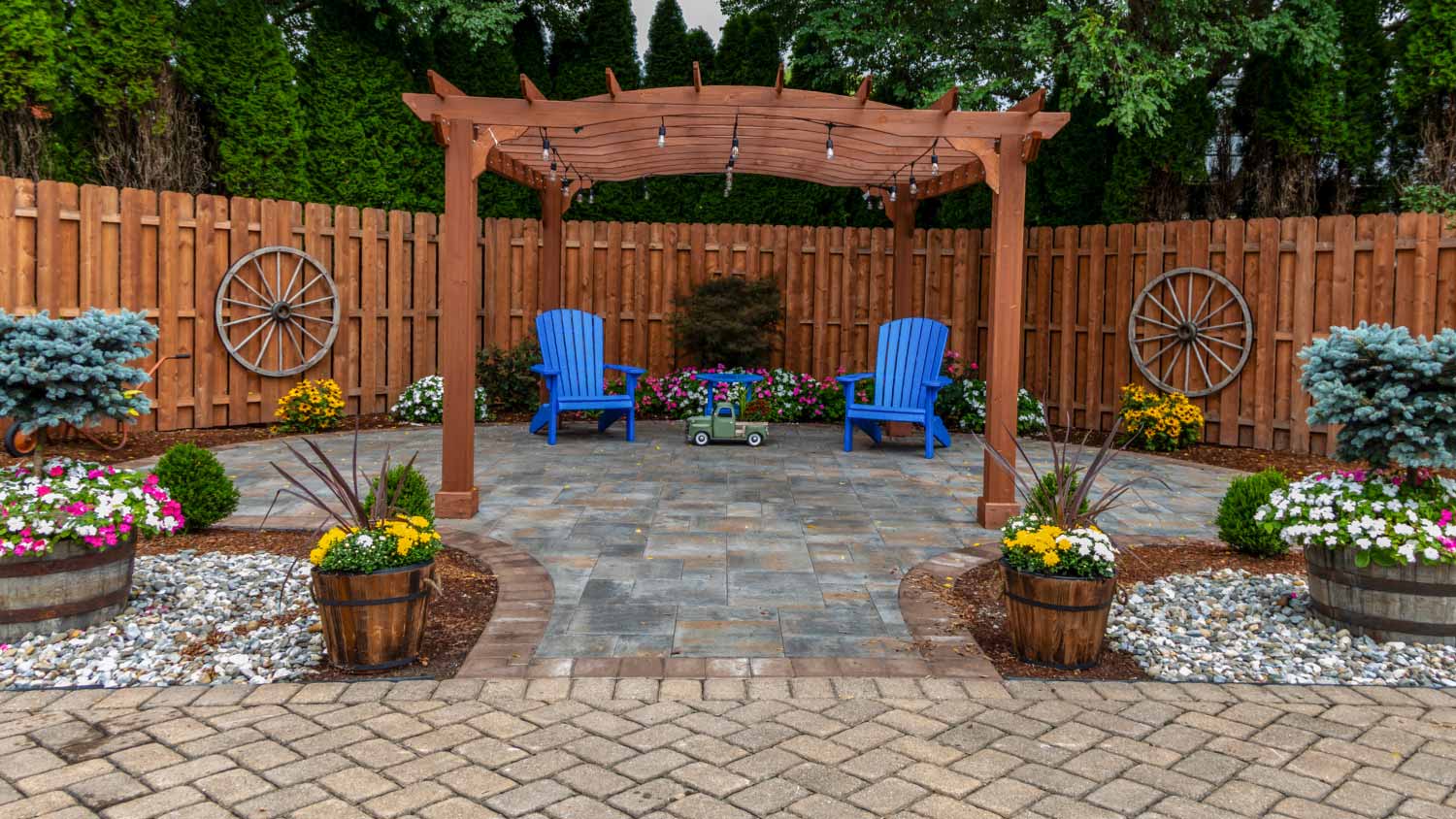
Pea gravel is a good-looking, versatile landscaping stone that's a favorite of the pros. Read about how much pea gravel costs for both installation and the stone itself.


The amount of gravel you need depends on your project.
Gravel type also affects how much you need.
Common uses for gravel include driveways and landscaping.
The average cost of gravel is $20 to $100 per cubic yard.
Gravel is often a cost-effective and attractive choice for landscape design and driveways. If you're asking yourself, “How much gravel do I need?” understand that it depends on multiple factors, including the type of gravel you want to use and the size of the area you're covering. Use this gravel calculator to figure out the appropriate amount of gravel to purchase and use.
If you plan on making a gravel driveway or creating a path or other area in a landscape design, refer to the table below to estimate how much gravel you'll need.
| Driveway Length | Driveway Width | Gravel Need for 2-Inch Depth (U.S. Tons) | Cost for 20-Foot Driveway |
|---|---|---|---|
| 20 ft. | 10 ft. (single car) | 2 | $200–$600 |
| 20 ft. | 20 ft. (2-car) | 3.5 | $400–$1,200 |
| 20 ft. | 30 ft. (3-car) | 5.25 | $600–$1,800 |
| 20 ft. | 20 ft. circular | 2.5 | $314–$942 |

To figure out how much gravel you’ll need for your project, determine three key measurements: the length and width of the area you’re working on, plus how deep you want the gravel to be. Once you have those numbers, multiply them together to get the volume:
Gravel needed (in cubic feet) = Length × Width × Depth
Keep in mind:
Measurements should be in feet for consistent results.
For most driveways or walkways, a depth of 2 to 4 inches is adequate (convert inches to feet by dividing by 12).
If you’re ordering in cubic yards (most suppliers sell gravel this way), divide your total cubic feet by 27.
How you measure a driveway depends on the shape. For a standard rectangular driveway, measure the length and the width. Multiply the two measurements to get the total square footage of your driveway. If your driveway is circular, you'll need to measure the diameter, then use the formula π x r to the power of two to find the area of the circle, where "r" is half of the diameter and π is 3.14.
Measuring for a landscaping area is similar to measuring for a driveway. For example, if you're measuring a circular area, you'll need to calculate the circle's area using π x r to the power of two. For a rectangular area, measure the length and width and multiply them together to get the total square footage of the area you’ll be working on.
With landscaping, you might have multiple areas to cover. If that's true for you, measure each area separately, then add the total square footage together at the end.
While you may want to try to lay pea gravel yourself or DIY your driveway, it's often the case that the most cost-effective and convenient option is to hire a professional to do it for you. Gravel is heavy, for one thing, and you may not have the tools or equipment needed to move large amounts of it. Pros, on the other hand, most certainly will.
If you're planning on using gravel in your landscape, it may be worthwhile to work with a landscape designer to plan the area and make sure it matches your aesthetic preferences while working with your yard's needs. To install a gravel driveway, it's worth it to contact a gravel driveway contractor.
From average costs to expert advice, get all the answers you need to get your job done.

Pea gravel is a good-looking, versatile landscaping stone that's a favorite of the pros. Read about how much pea gravel costs for both installation and the stone itself.

The cost of stone steps can vary considerably depending on the material you choose and how much labor is required. This guide shows you the cost of popular stone steps and all the extra fees you need to consider when tackling this project.

Need to know how much decomposed granite costs? Learn about the factors that affect decomposed granite's price and how much you need for your project.

Have you noticed your pavers sinking or would you like to forget about the stains on your driveway? Here are common paver problems and what to do about them.

Learn about the key differences between concrete pavers and natural stone pavers and find the better option for your home.

If you’re looking to build a brick pathway or patio, there are lots of walkway patterns to choose from. Here’s a list of the most popular designs and types.